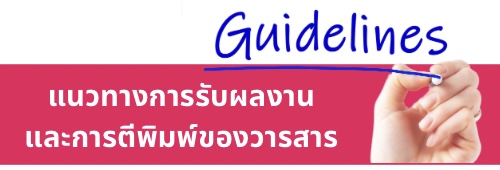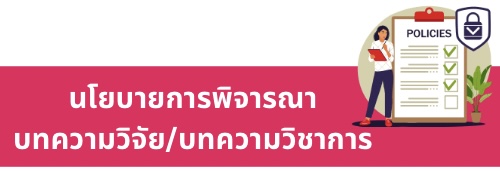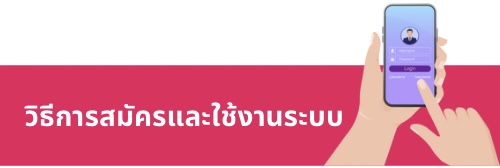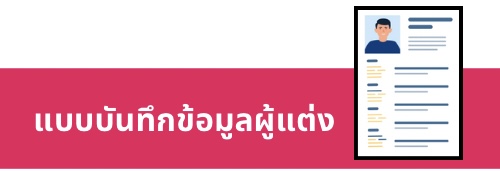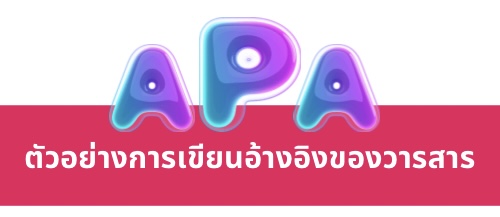ผลของโปรแกรมส่งเสริมการรับรู้ความเชื่อด้านสุขภาพร่วมกับการใช้แอปพลิเคชันต่อพฤติกรรมการป้องกันโรคหลอดเลือดสมองของผู้ป่วยกลุ่มเสี่ยงที่มีอายุน้อย
คำสำคัญ:
โรคหลอดเลือดสมองอายุน้อย, ความเชื่อด้านสุขภาพ, พฤติกรรมการป้องกันโรคหลอดเลือดสมองบทคัดย่อ
การวิจัยครั้งนี้เป็นวิจัยกึ่งทดลอง เพื่อศึกษาผลของโปรแกรมส่งเสริมการรับรู้ความเชื่อด้านสุขภาพร่วมกับ การใช้แอปพลิเคชันต่อพฤติกรรมการป้องกันโรคหลอดเลือดสมอง โดยประยุกต์ใช้แนวคิดแบบแผนความเชื่อด้านสุขภาพเป็นกรอบแนวคิดในการศึกษา ตัวอย่าง คือ ผู้ป่วยกลุ่มเสี่ยงโรคหลอดเลือดสมอง อายุ 18 - 45 ปี จำนวน 50 คน เข้ารับบริการ ณ คลินิกอายุรกรรมทั่วไป โรงพยาบาลระดับตติยภูมิขั้นสูงแห่งหนึ่งในกรุงเทพมหานคร ซึ่งแบ่งเป็นกลุ่มทดลอง 25 คน ได้รับโปรแกรมส่งเสริมการรับรู้ความเชื่อด้านสุขภาพร่วมกับการใช้แอปพลิเคชัน กลุ่มควบคุม 25 คน ได้รับการพยาบาลตามปกติ เครื่องมือหลักที่ใช้ในการวิจัย ได้แก่ โปรแกรมส่งเสริมการรับรู้ความเชื่อด้านสุขภาพร่วมกับการใช้แอปพลิเคชัน และแบบประเมินพฤติกรรมการป้องกันโรคหลอดเลือดสมองซึ่งมีค่า CVI เท่ากับ .96 และค่าสัมประสิทธิ์แอลฟาของครอนบาคเท่ากับ .72 วิเคราะห์ข้อมูลด้วยสถิติบรรยายและสถิติที
ผลการวิจัยพบว่า หลังได้รับโปรแกรมส่งเสริมการรับรู้ความเชื่อด้านสุขภาพร่วมกับการใช้แอปพลิเคชัน กลุ่มทดลองมีคะแนนเฉลี่ยพฤติกรรมการป้องกันโรคหลอดเลือดสมองสูงกว่าก่อนทดลอง อย่างมีนัยสำคัญทางสถิติ (M = 37.72, SD = 5.48 และ M = 29.96, SD = 4.69 ตามลำดับ; t = 6.588, p = .000) และสูงกว่ากลุ่มควบคุม อย่างมีนัยสำคัญทางสถิติ (M = 30.36, SD = 4.98; t = -4.968, p = .000) ดังนั้น พยาบาลและทีมสุขภาพควรนำโปรแกรมส่งเสริมการรับรู้ความเชื่อด้านสุขภาพร่วมกับการใช้แอปพลิเคชัน ไปพัฒนาใช้ในการส่งเสริมพฤติกรรรมการป้องกันโรคหลอดเลือดสมองในผู้ป่วยกลุ่มเสี่ยงที่มีอายุน้อย เพื่อให้เกิดพฤติกรรมการป้องกันโรคหลอดเลือดสมองที่เหมาะสม
Downloads
เอกสารอ้างอิง
Aigner, A., Grittner, U., Rolfs, A., Norrving, B., Siegerink, B., & Busch, M. A. (2017). Contribution of established stroke risk factors to the burden of stroke in young adults. Stroke, 48(7), 1744–1751. https://doi.org/10.1161/STROKEAHA.117.016599
Boot, E., Ekker, M. S., Putaala, J., Kittner, S., De Leeuw, F. E., & Tuladhar, A. M. (2020). Ischemic stroke in young adults: A global perspective. Journal of neurology, neurosurgery, and psychiatry, 91(4), 411–417. https://doi.org/10.1136/jnnp-2019-322424
Bunset, P., & Piyabanditkul, L. (2018). Effectiveness of stroke prevention program for high risk group at Hoiybong subdistrict, Muang district, Chaiyaphum province. Journal of Sakon Nakhon Hospital, 21(2), 28-41.
Chantra, R., Sansuwan, R., & Heeaksorn, C. (2017). Care for stroke patients with a multidisciplinary team. Journal of The Royal Thai Army Nurses, 18(Supplement), 49-55.
Chirasatienpon, T. (2021). Young stroke prevention program for university lecturers with risk factors via smartphone application. Open Journal of Social Sciences, 9(8), 108-119.
Dharma, K. K. (2020). Use of mobile-stroke risk scale and lifestyle guidance promote healthy lifestyles and decrease stroke risk factors. International journal of nursing sciences, 7(4), 401-407. https://doi.org/10.1016/j.ijnss.2020.08.001
Electronic Transactions Development Agency. (2020). Thailand internet user behavior 2019. Retrieved from https://www.etda.or.th/th/NEWS/ETDA-Revealed-Thailand-Internet-User-Behavior-2019.aspx
George, M. G. (2020). Risk factors for ischemic stroke in younger adults: A focused update. Stroke, 51(3), 729-735. https://doi.org/10.1161/STROKEAHA.119.024156
Hirungerd, S., Vutiso, P., & Srimongkol, M. (2021). The effects of health belief model program on knowledge, stroke prevention behavior and blood pressure levels in hypertensive patients the responsibility area of Kaeng Khro hospital, Chaiyaphum province. Journal of The Royal Thai Army Nurses, 22(1), 478-487.
International Health Policy Program Foundation. (2018). Disability-adjusted life years: DALYs, report burden of disease and injury on Thailand’s population 2014. Nonthaburi: The Graphico Systems.
Kanbuala, W., Aiadsuy, N., & Deenan, A. (2021). The effects of a health literacy promotion program on coronary artery disease preventive behaviors and serum lipid levels among people with dyslipidemia. The Journal of Faculty of Nursing Burapha University, 29(3), 1-14.
Kang, H. (2021). Sample size determination and power analysis using the G*Power software. Journal of Educational Evaluation for Health Professions, 18(1), 17-28. http://dx.doi.org/10.3352/jeehp.2021.18.17
Klinsakorn, C., & Saetan, S. (2020). Factors related to self-protective behavior of stroke with controlled hypertension patients who live in Danchang district, Suphanburi province. Journal of Council of Community Public Health, 2(2), 62-77.
Kumtip, P., & Jitpanya, C. (2014). Relationships among knowledge, belief, and behavioral awareness in young adult at high risk of stroke. Journal of The Police Nurses, 6(2), 44-55.
Lokawit, K., & Promla, W. (2018). Factors influencing the behaviors of young adult patients with stroke. Journal of Suvarnabhumi Institute of Technology, 4(Special), 401-411.
Mandalenakis, Z., Rosengren, A., Lappas, G., Eriksson, P., Hansson, P. O., & Dellborg, M. (2016). Ischemic stroke In children and young adults with congenital heart disease. Journal of the American Heart Association, 5(2), e003071. https://doi.org/10.1161/JAHA.115.003071
Murthy, M. K., Thomas, P. T., & Dasgupta, M. (2019). Potential for a comprehensive stroke education: Assessing awareness about stroke among community health workers-a qualitative study from Urban Bangalore, Karnataka, India. Journal of family medicine and primary care, 8(7), 2424-2428. https://doi.org/10.4103/jfmpc.jfmpc_303_19
National Health Security Office. (2007). Risk of stroke. Bangkok: Ministry of Public Health.
Non-Communicable Diseases Division. (2019). Number and mortality rate of non-communicable diseases in 2016-2018. Retrieved from http://www.thaincd.com/2016/mission/documents-detail.php?id=13653&tid=32&gid=1-020
Phanphop, S., Jantacumma, N., & Nuysri, M. (2020). Effects of stroke prevention program among elderly high risk group KoKha district, Lampang province. Research and Development Health System Journal, 13(2), 528-538.
Pragodpol, P., & Intana, J. (2019). The effect of the stroke warning signs program on stroke’s awareness, knowledge, and practice to decrease the stroke risk in hypertensive patients. Journal of Phrapokklao Nursing College, 30(2), 88-100.
Siriraj Stroke Center. (2019). Prevention of cerebrovascular disease. Retrieved from https://www.sirirajstrokecenter.org/2019/2910.html
Stretcher, V., & Rosenstock I. M. (1997). The health belief model. In K. Glanz, F. M. Lewis, & B. K. Rimer (Eds.). Health behavior and health education: Theory, research and practice (pp. 31-44). Jossey-Bass.
Singco, T., Changmai, S., & Toskulkao, T. (2020). The effects of promoting perception of health beliefs program on stroke preventive behaviors and perceived benefit of sustained behaviors in elderly at risk. Journal of Charoenkrung Pracharak Hospital, 16(2), 42-60.
Suthirit, S., Pinchaleaw, D., & Keskomon, T. (2018). The effectiveness of self regulation program with line application among overweight health volunteers, Tharongchang district, Suratthani province. Journal of the Police Nurses, 10(2), 330-339.
Suwanno, J., Suwanno, J., Angkoon, K., & Rajborirug, K. (2018). Cardiovascular risk factors in young adult patients with acute ischemic stroke. Journal of Thai Stroke Society, 17(2), 5-17.
Thipluis, K., & Khuanphet, P. (2019). Effectiveness of providing health education to patients with high risk of stroke in Mae Lao district, Chiang Rai, Thailand. Chiangrai Medical Journal, 11(2), 19-24.
Wichaiyo, W., Chongsamak, P., Chaitong, S., & Khotabutda, S. (2021). The effect of the applying health belief model program of vascular disease preventive in patients with hypertension and diabetes mellitus at Namon district, Kalasin province. Research and Development Health System Journal, 14(2), 25-35.
World Stroke Organization. (2022). Lean about stroke. Retrieved from https://www.world-stroke.org/world-stroke-day-campaign/why-stroke-matters/learn-about-stroke

ดาวน์โหลด
เผยแพร่แล้ว
รูปแบบการอ้างอิง
ฉบับ
ประเภทบทความ
สัญญาอนุญาต
ลิขสิทธิ์ (c) 2022 วารสารพยาบาลตำรวจ

อนุญาตภายใต้เงื่อนไข Creative Commons Attribution-NonCommercial-NoDerivatives 4.0 International License.
ผลงานที่ได้ตีพิมพ์แล้วจะเป็นลิขสิทธิ์ของวารสารพยาบาลตำรวจ

